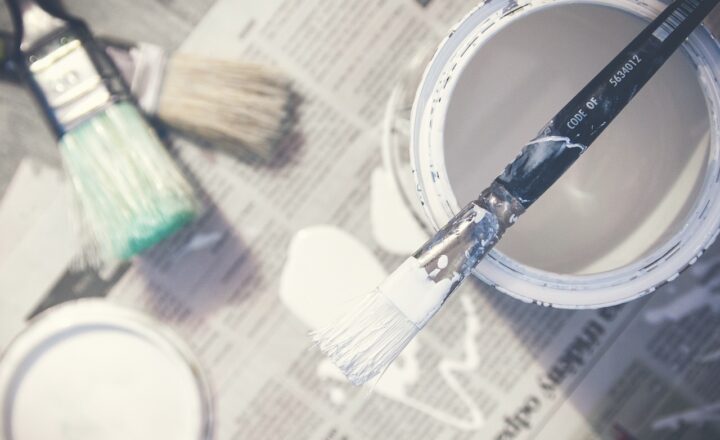The Strange History of the Lava Lamp and Why It’s Still Popular
November 15, 2024

The lava lamp, a mesmerizing and iconic piece of decor, has been entrancing audiences since its invention in the 1960s. Its swirling, colorful blobs capture the imagination, evoking a sense of nostalgia for many, while simultaneously appealing to new generations discovering its charm. But what is the story behind this captivating lamp, and why does it continue to be a beloved object in homes and businesses today?
### The Birth of the Lava Lamp
The lava lamp was invented by British engineer Edward Craven Walker in 1963. The concept was inspired by a drink he saw at a bar—an egg timer cocktail that featured liquid in a container, with blobs of wax floating and moving around. Walker saw potential in this fascinating effect, and he began experimenting with various combinations of liquids and wax to create his very own lamp. By 1965, he had founded his company, Mathmos, and began producing lava lamps for commercial sale.
The original design featured a glass bottle filled with a special wax mixture and a colored liquid, typically water with a bit of dye. When heated, the wax would expand, becoming less dense, and rise to the surface, eventually cooling and sinking back down as it became denser again. This was the essence of the lamp’s enchantment—the hypnotic undulation of the colored wax that made it feel almost alive.
### The Cultural Phenomenon of the 1960s and 1970s
The lava lamp quickly gained popularity during the psychedelic era of the 1960s and 1970s, serving as a symbol of the counter-culture movement. The vibrant colors and mesmerizing motion dovetailed seamlessly with the ideals of peace, love, and artistic expression that defined the time. These lamps graced the homes of many young people seeking to enliven their spaces with unusual and dynamic art.
Not only were lava lamps featured in popular television shows and movies, but they also became a staple in music venues and nightclubs. Their fluid, ever-changing patterns created the perfect atmosphere for the new rock and roll revolution occurring simultaneously.
### Decline and Revival
As the world moved into the 1980s and beyond, the lava lamp’s popularity waned, often regarded as a kitschy relic of the past. Many saw it as outdated, and the designs that once typified the vibe of a whole generation faded into obscurity, replaced by more modern forms of lighting and decor.
However, the lava lamp experienced a resurgence in the late 1990s and early 2000s, fed by a wave of nostalgia and an appreciation for retro culture. The advent of the internet allowed enthusiasts to reconnect with and rediscover the allure of these captivating lamps. This revival was supported by a renewed interest in ‘60s and ‘70s aesthetics, with vintage items becoming popular again.
### The Science Behind the Glow
At its core, the lava lamp operates on a simple scientific principle: density and heat. The special wax used in the lamp is crafted to melt at a specific temperature (around 140 degrees Fahrenheit). Once the lamp is turned on and the wax heats up, it becomes less dense than the surrounding liquid and rises. Once it reaches the top, it cools down, becomes denser again, and falls. This cycle creates the classic lava lamp effect.
Furthermore, the colors of the wax and liquid are specifically chosen to contrast, enhancing the visual appeal. Many lamps now offer countless color combinations and designs, from the traditional orange and yellow to neon shades and even color-changing options.
### Why Lava Lamps Still Captivate Us
Several reasons explain why the lava lamp has endured through decades of changing design trends:
1. **Retro Appeal**: With the rise of nostalgia culture, items from the past evoke comfort and familiarity. Lava lamps are a reminder of a more relaxed, bohemian era.
2. **Unique Lighting**: The soft, glowing light and rhythmic motion of the lava lamp create a calming ambiance, making it perfect for relaxation and meditation.
3. **Conversation Starter**: The lava lamp’s whimsical design naturally intrigues guests, sparking conversations and adding an eccentric touch to home decor.
4. **Artistic Expression**: Many designers now create modern interpretations of the classic lava lamp, incorporating contemporary aesthetics while maintaining the playful magic of the original.
### Conclusion
In conclusion, the strange history of the lava lamp reveals much about our changing tastes and the nostalgia for simpler times. Its fascinating science, vintage allure, and eye-catching presence ensure that this classic decor item captures the hearts and minds of generations, proving that sometimes, the old truly is gold. Whether you’re rediscovering it for the first time or embracing your memories of its swirling serenity, the lava lamp continues to shine.
As new generations join in the appreciation of this quirky light, the lava lamp stands not just as a lamp but as a piece of history—one that will surely continue to mesmerize and inspire those who encounter its bubbly glow.








